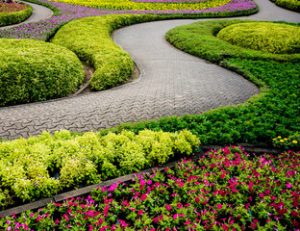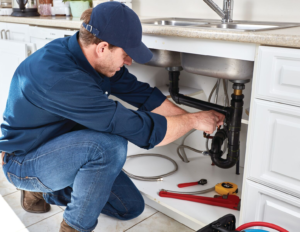If you want to maximize your ROI, PPC management requires a holistic approach. This involves setting goals, analyzing data, and making adjustments. It also includes leveraging advanced tactics such as demographic targeting and remarketing.

Demographic targeting uses your audience’s characteristics to target the right ads at the right time. This can help you avoid wasting budget on irrelevant clicks and increase conversions. Visit https://infinitydigitalmediallc.com/ to learn more.
PPC is a paid form of online marketing that drives visitors to your website through search engine results. It uses complex algorithms to optimize clicks and conversion rates. In order to get the best return on investment, you need a team of experienced professionals who can track the metrics that matter most.
A professional PPC agency can manage every aspect of your campaign, including ad creation and optimization. They can also develop a comprehensive keyword strategy and use it to drive targeted traffic. Additionally, they can utilize ad extensions to maximize the visibility of your ads.
The cost-per-click (CPC) is an important metric for analyzing the effectiveness of your PPC campaign. However, it shouldn’t be viewed in isolation from other metrics like conversions and return on ad spend (ROAS). By tracking these metrics, you can identify keywords or ad variations that resonate most with your target audience. This information can help you improve performance and increase your ROI.
CPC is influenced by many factors, including competition for keywords, click fraud, ad blockers, and rising costs. By identifying and addressing these issues, you can minimize wasted spending and achieve better results over time. Moreover, by allocating your budget to the highest-performing campaigns, you can amplify your results without sacrificing ROI. This strategic scaling ensures sustained revenue growth and maximizes ROI over time. This approach can also be applied to other marketing channels such as social media or mobile app ad buys.
Ad copy
Ad copy is the text used in advertisements, aiming to increase conversion rates by appealing to audiences on a more personal level. It highlights the key benefits and features of products or services, assisting businesses in selling more efficiently as part of an overall digital content strategy. Moreover, it can also inspire and encourage next-step actions like making a purchase or signing up for a newsletter.
There are many formats and frameworks for writing ad copy, but the most important thing is to make sure that your copy tells your audience what you want them to do. Your ad should be compelling enough to stop thumbs from scrolling and eyes from glazing over, and it should resonate with your audience. The best way to do this is by understanding your target audience, which can be done through research and surveys. You can use this information to refine your targeting and adjust your bid strategies.
In addition to a well-crafted ad copy, PPC Management involves utilizing a number of tools to optimize performance and reduce human error. These tools automate tedious tasks, such as ad creation and bidding, and help you analyze and compare competitor campaigns. They can also be used to uncover hidden keyword gems and help you maximize your ROI.
Ad scheduling
Ad scheduling is an important part of PPC management. It enables you to control the times that your ads will display, maximizing their impact and reducing wasted spend. It is especially useful for B2B businesses that want to target their audience during business hours. By analyzing your campaign data, you can determine which days of the week and hours of the day are most effective for ad placements. This will help you avoid ad fatigue and maximize your return on ad spend.
Some PPC tools offer cross-platform management, allowing marketers to manage multiple accounts from a single dashboard. These tools can also automate tasks such as bid adjustments and ad scheduling. These tools can save you time and energy, so that you can focus on your strategy.
However, it is best to let a professional handle your PPC campaign. It takes a lot of work and expertise to create successful campaigns. Moreover, you need to have a clear understanding of the latest digital trends. This way, you can implement a more strategic approach that will deliver the best results for your business. Additionally, a good PPC management agency will ensure that your campaigns are reaching the right people at the right time. This will help you drive more relevant traffic and generate more leads for your business. They will also ensure that your campaigns are in line with your goals and objectives.
Ad dayparting
Ad dayparting is the practice of limiting your ads to specific times when your target audience is most active online. This is a valuable strategy for increasing conversions and decreasing unnecessary ad spending. To do this, marketers analyze data on their campaigns and determine which hours of the day and days of the week have the best conversion rates. They then limit their ad scheduling to these periods and reduce bids during off-peak hours.
For example, a local coffee shop might use dayparting to schedule their ads around breakfast hours. By analyzing customer data, they know that their target audience searches for “coffee” terms in the morning, and they can focus their budget on these peak times to maximize conversions. This strategy is also ideal for businesses that are open during business hours, such as service-based companies.
Using dayparting in PPC Management can increase your ROAS by decreasing ad costs and reducing competition in the ad auction. However, it’s important to monitor your results and make adjustments as needed. For example, if you notice a spike in your campaign performance, it might be time to change your ad schedule. You may want to decrease your bids during off-peak hours or even pause your campaigns completely. This is particularly useful for seasonal trends and changes in consumer behavior.
Ad targeting
PPC Management is the process of overseeing and optimizing a company’s pay-per-click advertising campaigns to generate maximum return on investment. It involves a series of activities that include planning, targeting, budgeting, and analysing results. The aim is to create ads that resonate with customers and encourage them to take action. Whether that means visiting a website or buying a product, a well-executed PPC campaign can increase sales and revenue while reducing costs.
The first step in PPC Management is to align your marketing goals with your business objectives. This will ensure that your budget is spent on ads that directly support your growth. This approach is critical for maximizing the effectiveness of your campaigns and driving significant results.
Using keywords is an essential part of any PPC strategy. These words describe the search intent of your target audience and help you attract the right people to your ads. To maximize your return on ad spend, you should use tools like Google Keyword Planner to find keywords with high search volume and low competition.
Ad scheduling and dayparting is another way to improve your ad performance. This technique allows you to optimize your ads by increasing or decreasing bids at specific times of the day. It also helps you avoid ad fatigue by showing your ads less frequently. For example, if you sell a B2B product, you can increase your bids during office hours and decrease them during weekends.
Remarketing
Remarketing is an advanced PPC strategy that enables you to target users who have already interacted with your website or digital content. It can be used to re-engage lost visitors, boost conversion rates and maximize ROI. It can also be used to encourage customers to visit your physical location, or to send personalized emails to those who have left products in their shopping cart.
Retargeting is especially effective in the awareness stage, when potential customers are searching for the products and services you offer. In this phase, a broad net is cast in order to capture as many potential clients as possible. This is done through general PPC advertising, such as search ads and display ads.
Once a user visits your site, a small piece of code, known as a cookie, is placed on their browser. This allows your advertising platform to track their online behavior, including the pages they visit and the content they consume. This information can then be used to target specific audiences, such as those who visited your red dress page but didn’t purchase the product.
PPC management tools are software programs that automate the most time-consuming and data-intensive tasks in a pay-per-click campaign. These tools can help you analyze your performance, optimize your budget and identify new opportunities. They can also provide insights that you might otherwise miss, such as the time of day when your ads perform better or the type of device that best engages your audience. PPC tools are available for a number of platforms, including Google Ads, Microsoft Advertising, Facebook, Instagram and Amazon.



